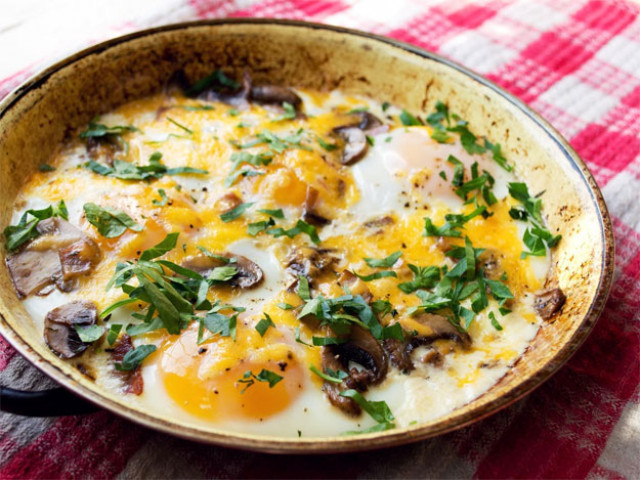Business
Food prices push yearly SPI to 35-week high | The Express Tribune
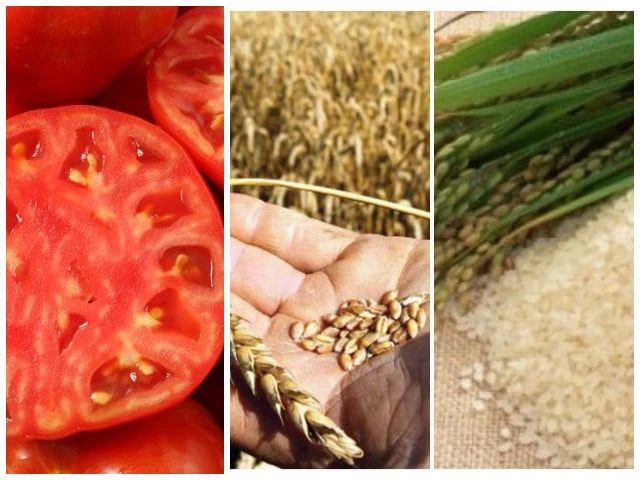
KARACHI:
Pakistan’s weekly inflation, measured by the Sensitive Price Indicator (SPI), week ending Sep 04, 2025, increased by 1.29% week on week (WoW) and up 5.07% year on year (YoY), which is the highest YoY after 35 weeks.
Major increase was observed in the prices of tomatoes, wheat flour, onions, rice basmati broken, garlic, potatoes.
“Pakistan’s Weekly SPI for the period ending Sep 04, 2025, increased by 1.29% WoW while up 5.07% YoY, which is the highest YoY after 35 weeks,” noted Topline Securities.
The SPI rose by 1.29% for the combined consumption groups during the week ended September 4, 2025, according to data released by the Pakistan Bureau of Statistics (PBS). The SPI was recorded at 335.41 points compared to 331.14 points in the previous week. On a year-on-year basis, the SPI registered an increase of 5.07%, the highest annual rise in 35 weeks, reflecting renewed price pressures in essential commodities.
The PBS noted that the inflationary burden was more pronounced for lower-income households. For the lowest consumption group with monthly expenditure by 2.01% to 327.73 points, while other quintiles recorded weekly rises of 1.90%, 1.61%, 1.48%, and 0.99% respectively. This indicates that households in the lower-income brackets continue to bear the brunt of price hikes, particularly in food essentials that form a larger share of their consumption basket.
Out of the 51 essential items monitored, the prices of 23 items or 45.10% increased, 4 items or 7.84% declined, while 24 items or 47.06% remained stable during the week under review. The steepest weekly increases were observed in the prices of tomatoes, which soared 46.03%, followed by wheat flour at 25.41%and onions at 8.57%. Other notable increases included rice basmati broken at 2.62%, garlic at 2.04%, potatoes at 1.38%, pulse moong at 1.29%, and bread at 1.19%. Non-food categories also saw moderate increases, with LPG rising by 0.88%, shirting by 0.27%, long cloth by 0.17%, and lawn printed by 0.07%. In contrast, bananas declined by 3.86%, diesel by 0.91%, sugar by 0.13%, and mustard oil by 0.10%, offering limited relief.
On a yearly basis, several items remained significantly higher than last year. Tomatoes registered the steepest jump at 83.45%, followed by ladies’ sandals at 55.62%, wheat flour at 30.27%, and gas charges for Q1 at 29.85%. Prices of sugar rose 27.43%, while gur, beef, pulse moong, firewood, vegetable ghee, and chicken all recorded double-digit increases. Lawn printed also edged higher by 7.72%, adding to household expenses. On the other hand, major yearly declines were recorded in onions, which fell 47%, garlic at 25.50%, pulse mash at 22.93%, potatoes at 19.25%, and pulse gram at 19.04%. Other notable declines included electricity charges for Q1 at 18.12%, tea packet at 17.93%, pulse masoor at 6.07%, rice IRRI-6/9 at 4.60%, and LPG at 3.71%.
Analysts point out that while weekly inflation is largely being driven by volatility in perishable food items such as tomatoes and wheat flour, the broader year-on-year jump raises concerns about persistent cost-of-living pressures. With inflation hitting its highest yearly spike in over eight months, the government faces a growing challenge in protecting lower-income households from food price shocks.
Business
Social security benefits to rise 2.8%: Retirees to see $56 monthly boost; senior citizens say increase not enough – The Times of India

The Social Security administration on Friday announced that its benefits will increase by 2.8% in 2026, giving retirees an average monthly boost of more than $56. The rise reflects moderating inflation after several years of higher cost-of-living adjustments (COLA).The increase will take effect in January for nearly 71 million Social Security recipients, while about 7.5 million people receiving Supplemental Security Income will see higher payments starting December 31.The announcement, which was scheduled for last week, was delayed due to the US federal government shutdown.Recipients saw a 2.5% increase in 2025 and a 3.2% rise in 2024, following a historic 8.7% jump in 2023 driven by record-high inflation. The COLA is funded by payroll taxes collected from workers and employers, up to an annual salary cap that will rise to $184,500 in 2026 from $176,100 in 2025.Social Security Administration Commissioner Frank Bisignano said in a statement that the annual adjustment “is one way we are working to make sure benefits reflect today’s economic realities and continue to provide a foundation of security.” However, many seniors believe the increase won’t be enough to meet rising living costs, reported AP.Polling from AARP shows that many older Americans share that concern. Only 22% of Americans over 50 believe a COLA of around 3% is enough to keep up with inflation, while 77% disagree. According to the MIT Living Wage Calculator, a single adult living in Florence, South Carolina, spends about $10,184 annually on housing, $3,053 on medical expenses and $3,839 on food.Emerson Sprick, director of retirement and labor policy at the Bipartisan Policy Center, said in a statement that cost-of-living increases “can’t solve all the financial challenges households face or all the shortcomings of the program.”The latest adjustment comes as the Social Security Administration faces internal challenges and uncertainty about the program’s long-term future. In July, Treasury Secretary Scott Bessent said the Republican administration was committed to protecting Social Security, hours after comments suggesting that a new children’s savings program signed by President Donald Trump was “a back door for privatising Social Security,” as quoted by AP.
Business
Vande Bharat In Black Colour Coming Soon? Videos Go Viral On X – Details

Vande Bharat In Black Coming Soon? A video showing a sleek black-coloured Vande Bharat Express has gone viral on social media, with many users claiming it to be the upcoming rake featuring modern facilities. The train in the black livery shown in the video has drawn widespread attention for its striking appearance, reminiscent of the classic Rajdhani Express design with its large windows and aerodynamic finish.
However, fact-checks reveal that the viral video is AI-generated and not an official design or prototype of any new Vande Bharat train.
Currently, the Vande Bharat Express operates in two colour variants — the original white-and-blue and the newer orange-and-grey (orange-black) design introduced earlier this year. The purported “black edition” seen in the viral clip does not exist in reality.
From design to delivery, made entirely in India!
The new Vande Bharat Sleeper Coach captures the true spirit of Aatmanirbhar Bharat and Make in India.
A sleek symbol of innovation, comfort, and national pride, built not just to run on tracks, but to drive India’s confidence… pic.twitter.com/xgH2ZK59Rg
— Satya Kumar Yadav (@satyakumar_y) October 24, 2025
Upon closer inspection, several inconsistencies confirm the video’s artificial origin. The front nose of the train bears the text “Vande Bharat 2003,” even though the first Vande Bharat Express was officially launched only in 2019. Moreover, the side panels of the train display distorted and unreadable text, a common artifact in AI-generated visuals.
India’s first Vande Bharat Sleeper Train — a perfect blend of comfort, speed & technology
Fully Made in India. The new face of Aatmanirbhar Bharat pic.twitter.com/Ew9oBoUF6i
— Megh Updates (@MeghUpdates) October 24, 2025

Experts note that such synthetic videos, created using AI rendering tools and image generators, often go viral due to their photorealistic quality and futuristic appeal. Rail enthusiasts and fact-checkers have urged social media users to verify sources before sharing such clips.
While the Indian Railways continues to expand its fleet of Vande Bharat trains with improved technology and comfort, officials have confirmed that no official plans exist for a black-coloured version of the train at present.
Business
Carney: Canada is ready to pick up trade talks when US is ready
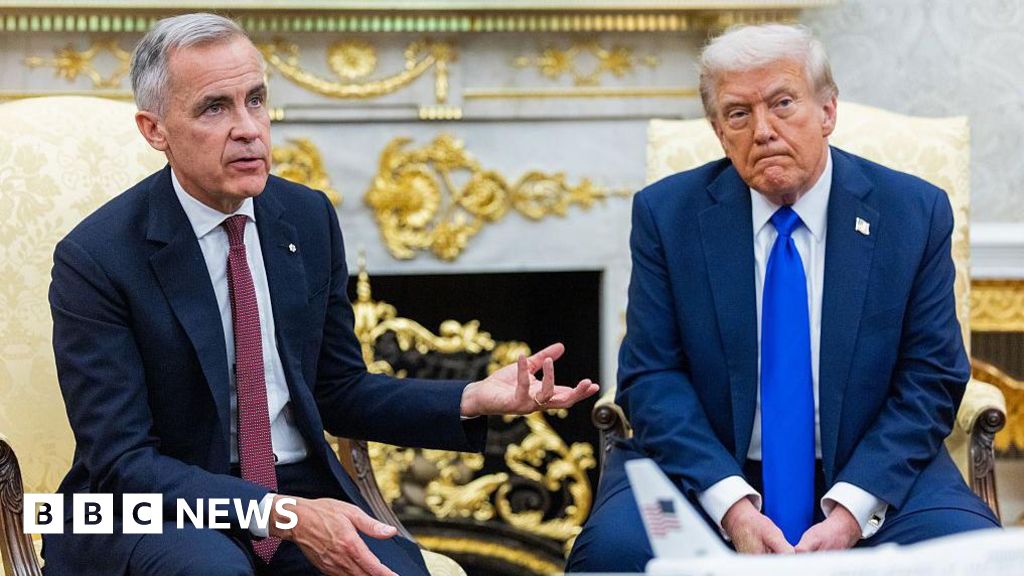
Osmond Chia,Business reporter, and
Maia Davies
Canadian Prime Minister Mark Carney said his country is prepared to resume trade talks with the US “when the Americans are ready.”
His remarks come after US President Donald Trump announced an immediate end to all trade negotiations with Canada over an advert critical of the tariffs he has imposed on the nation.
The advert, sponsored by the Canadian province of Ontario, quotes former US President Ronald Reagan, a Republican and icon of US conservatism, saying tariffs “hurt every American”.
Trump wrote on social media that the advert was “FAKE” and “egregious”, adding that trade talks were “HEREBY TERMINATED”.
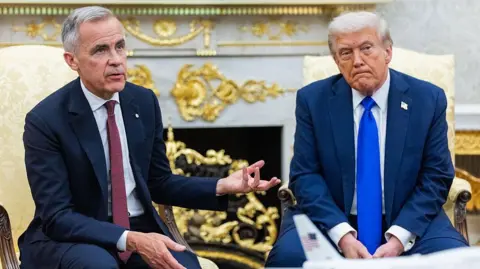 Getty Images
Getty ImagesThe Trump administration has imposed a 35% levy on many Canadian imports, as well as individual tariffs targeting particular industries like car and steel manufacturing. Ontario has been particularly hard-hit by these.
Trump has allowed exemptions for goods that fall under a free trade agreement with Mexico and Canada, negotiated during his first term.
But since his election earlier this year, Canada’s Carney has attempted to strike a deal that would ease the tariffs. Three-quarters of Canadian exports are sold to the US, making its economy particularly vulnerable.
This effort has been complicated by Ontario Premier Doug Ford, who is one of the most vocal critics of the taxes levied on US firms buying Canadian products.
In the minute-long advert published last week, Reagan’s voice can be heard narrating over images that include the New York Stock Exchange and cranes adorned with both US and Canadian flags.
The video excerpts from a 1987 national radio address by Reagan that focuses on foreign trade.
“When someone says, ‘let’s impose tariffs on foreign imports’, it looks like they’re doing the patriotic thing by protecting American products and jobs. And sometimes, for a short while, it works – but only for a short time,” Reagan says in the advert.
“Over the long run, such trade barriers hurt every American, worker and consumer.
“High tariffs inevitably lead to retaliation by foreign countries and the triggering of fierce trade wars… Markets shrink and collapse, businesses and industries shut down and millions of people lose their jobs.”
The Ronald Reagan Foundation – which is charged with preserving his legacy – released a statement on Thursday saying the advert had used “selective” audio and video of the former president’s remarks.
It said the advert “misrepresents” the former president’s address, without specifying why, and accused the Ontario government of not seeking permission to use and edit the remarks.
The foundation said it was “reviewing its legal options”.
Trump referenced this statement, and said the video was designed to “interfere with” the US Supreme Court’s upcoming decision in November on whether Washington’s sweeping tariffs on many nations’ products are legal.
The court’s decision represents the biggest test of Trump’s presidential authority and signature economic policy, potentially forcing the US to refund billions collected in tariffs.
Prime Minister Carney did not address the advertisement in his remarks early on Friday. He said that Canada has made “a lot of progress” in trade talks with the US, but is also focused on “developing new partnerships” with other countries, including Asia.
He spoke as he was departing Canada for the ASEAN summit in Kuala Lumpur. Trump is also expected to attend.
Ford, meanwhile, posted the full Reagan speech on X and wrote: “Canada and the United States are friends, neighbours and allies. President Ronald Reagan knew that we are stronger together.”
While it only includes excerpts from the original, five-minute-long address, it does not alter Reagan’s words.
The order in which he makes the comments has been changed. The advert’s penultimate sentence is taken from near the beginning of his speech, and a phrase that features about halfway through the advert is likewise taken from an earlier point in the address.
The original address – titled Address to the Nation on Free and Fair Trade – is regarding a specific set of tariffs the Reagan administration had at the time imposed on some Japanese goods.
Reagan seeks to use the speech to explain why he introduced the tariffs in this “special case” despite his belief that “imposing such tariffs or trade barriers and restrictions of any kind are steps that I am loath to take”.
He makes clear that he wants to lift them as soon as possible “to promote the prosperity and economic development that only free trade can bring” – a position he stresses throughout the speech.
Trump later doubled down on his criticism of the advert, writing that “Ronald Reagan did not like Tariffs, when actually he LOVED TARIFFS FOR OUR COUNTRY, AND ITS NATIONAL SECURITY”.
Speaking to White House reporters on Friday morning, US National Economic Council Director Kevin Hassett said that “frustration has built up over time” with Canada.
“The Canadians have been very difficult,” he said.
A few minutes earlier, he told Fox Business that “sometimes when you’re frustrated, a time-out is the right call.”
“It’s probably a good time to take a break.”
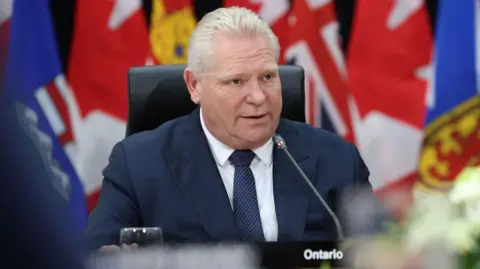 Getty Images
Getty ImagesThe advert was run as part of a campaign worth $75m Canadian dollars (£40m; $54m) on mainstream TV channels in the US.
In a post accompanying the advert last week, Ford wrote that “we’ll never stop making the case against American tariffs on Canada”.
China’s embassy in Washington also used a similar Reagan clip in a post on X to cast doubt on Trump’s global tariffs earlier this year.
Ontario is Canada’s most populous province and its largest regional economy, and has suffered the most as a result of the US tariffs.
Ford hit back at Trump’s earlier tariff threat against Canada by saying he was willing to cut off power supply to the US.
He had also described Washington’s trade policies against Canada as having pulled a knife and “yanked it into us“, and called on US lawmakers to put pressure on Trump.
Trump’s sector-specific levies on Canadian goods include a 50% levy on metals and 25% on automobiles.
The White House’s global tariffs – particularly on steel, aluminium and cars – have hit Canada hard, forcing job losses and putting pressure on businesses.
It is the second time Trump has said he was ceasing trade talks with Canada, after Ottawa announced it would impose a digital services tax on US technology firms earlier this year.
When Canada rescinded the tax, the White House said Carney had “caved” to pressure from Trump.
-

 Tech1 week ago
Tech1 week agoWhy the F5 Hack Created an ‘Imminent Threat’ for Thousands of Networks
-

 Tech5 days ago
Tech5 days agoHow to Protect Yourself Against Getting Locked Out of Your Cloud Accounts
-

 Sports1 week ago
Sports1 week agoU.S. Soccer recommends extending NCAA season
-

 Tech6 days ago
Tech6 days agoI Tested Over 40 Heat Protectant Sprays to Find the Best of the Best
-

 Sports7 days ago
Sports7 days agoPCB confirms Tri-nation T20 series to go ahead despite Afghanistan’s withdrawal – SUCH TV
-

 Tech7 days ago
Tech7 days agoThe Best Part of Audien’s Atom X Hearing Aids Is the Helpful, High-Tech Case
-

 Tech1 week ago
Tech1 week agoSpit On, Sworn At, and Undeterred: What It’s Like to Own a Cybertruck
-

 Tech7 days ago
Tech7 days agoUS court bars NSO Group from installing spyware on WhatsApp





